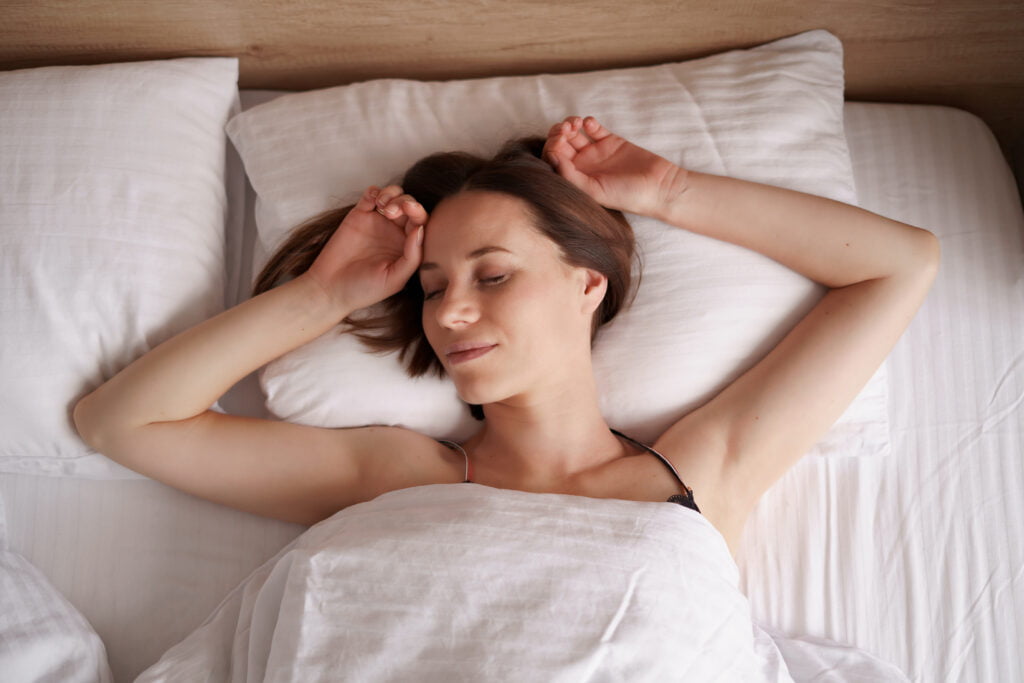7 of the Best Positions for Sleep and Why
For many of us, getting enough sleep can be a challenge. After all, there are only so many hours in the day and it’s easy to get pulled in different directions. But getting enough restful sleep is essential for our physical and mental health. One factor that can make a huge difference when it comes to getting good quality sleep is the position, we choose to sleep in.
Trying to figure out the best position for a good night’s sleep? Whether you’re a side sleeper, back sleeper, or belly sleeper, there is a specific position that is most likely to help you get the rest and relaxation you need. Learn how different sleep positions can increase your comfort and provide a better quality of sleep.

Best Positions for Sleep
When it comes to getting your best night’s sleep, there are lots of things to consider. From what type of mattress you should use to how much time you should spend in bed, making the right choices can help ensure you get the restful slumber your body needs. One thing that many people don’t think about when they’re trying to sleep in their position. Finding the best position for sleep can go a long way in helping you drift off quickly and stay asleep all night long.
The most popular sleeping positions include sleeping on your side, back, or stomach. Each one has its own pros and cons when it comes to comfort and health benefits. For example, while sleeping on your side may be more comfortable for some people, it can put extra pressure on the spine which could lead to back pain over time.
Back Sleeping
If you’re a back pain sufferer, you know all too well how uncomfortable it can be to get a good night’s sleep. You may also have noticed that certain sleeping positions seem to bring more relief than others. But did you know that the best position for sleep when dealing with back pain is actually back sleeping?
When lying on your back, your spine stays in neutral alignment, meaning it doesn’t put pressure on any particular area of the spine. This helps keep the muscles relaxed and prevents undue strain on any single part of your body. Additionally, many people find that when they are lying flat on their back, it is easier to maintain a good posture both during sleep and while awake.
Back sleeping may not be comfortable or even possible for everyone with back issues so don’t be discouraged if this isn’t an option for you!
The Log Position
If you suffer from digestive issues, sleeping in the log position can help ease symptoms and prevent them from worsening. Also known as the fetal position, this is one of the best positions for sleep. It involves lying flat on your side with your legs tucked under your body and arms bent near your face. This creates a curved shape which helps to reduce heartburn, acid reflux, bloating, and other common digestive issues.
By sleeping in this position, you are able to maintain a neutral spine posture that allows for smoother digestion throughout the night. It also helps alleviate pressure on the stomach by keeping it higher than the esophagus and reducing stomach acid movement upwards into the esophagus during sleep. This can lessen symptoms such as burning sensations in the chest area and allow you to get a good night’s rest without any discomfort or pain.
Starfish Position
Sleeping in the Starfish position is one of the best positions for snoring prevention and ensuring a good night’s sleep. It’s simple to do and can make a huge difference in how well you rest each night.
The Starfish position involves lying on your back with both arms resting by your sides, palms facing up. This helps keep airways open, so you don’t end up snoring as much or at all. Not only does it help prevent snoring, but this position also allows for better breathability throughout the night. It’s especially beneficial for those who suffer from allergies or asthma since it keeps their airways open while they sleep—which makes breathing easier and more comfortable. Plus, it helps relieve pressure on your neck and shoulders which can lead to better sleep quality overall!
Fetal Position
Fetal position is arguably the most common sleep position and for good reason. It’s comfortable, it helps promote good spinal alignment, and best of all – it can help you get a better night’s rest. Not only does the fetal position help you to relax your body more quickly than other positions, but it also comes with some additional health benefits as well!
The best thing about sleeping in the fetal position is that it allows your spine to naturally align itself while you sleep. This means less strain on your back muscles and joints during the night and fewer aches and pains throughout the day. Additionally, because this position allows your body to curl up into a ball-like shape, it can leave you feeling warm and cozy – perfect for those cold winter nights!
Yearner Position
Finding the perfect position for a good night’s sleep can be a real challenge. If you’re one of those people who can never seem to get comfortable when trying to sleep, you may want to consider the yearner position. It has been hailed as one of the best sleeping positions around and could be just what you need to get that much-needed rest.
The yearner is a pose where you lay on your side with both arms out in front of your body, almost like you are reaching for something in the distance. This posture helps keep your spine aligned and does not put too much pressure on any single muscle group or joint. Additionally, it allows for chest expansion which can help improve breathing during sleep and reduce snoring or other breathing issues related to poor posture.
Soldier Position
When it comes to the best position to sleep, many of us don’t give much thought to it. But did you know that sleeping in the “soldier” position – lying on your back with your arms at your sides and legs straight – can be beneficial for a good night’s rest?
The soldier position is one of the most common positions for sleeping. It helps maintain proper posture and aids in spine alignment, which can help reduce neck and back pain. Additionally, this sleep position allows air to flow freely around the body, so you won’t get too hot or too cold while you snooze. This may lead to fewer interruptions throughout the night and make it easier for you to wake up feeling rested!
If you’re looking for a good night’s rest, consider giving this sleep style a try!
How Much Sleep Should I Get
When it comes to getting a good night’s rest, the amount of sleep you get is just as important as how you sleep. Getting the right amount of quality shut-eye can help improve your overall health and well-being. It’s easy to think that any position will do when it comes to sleeping, but knowing what the best positions for snoozing are can make all the difference.
Our bodies need seven to nine hours of sleep each night so that our minds and bodies can restore themselves and get ready for another day. The best sleep positions help us with achieving this goal by reducing pain and preventing wrinkles.
Final Thoughts on Best Positions for Sleep
Sleeping is a natural part of life and getting the best rest possible can be beneficial in many ways. It can improve physical health, and mental well-being, and even help with productivity. Knowing which position is ideal for sleep can be tricky though as there are many different options to choose from.
The most common sleeping positions are probably on the back or side, but these aren’t always the best choices for everyone. For example, those with lower back pain may find it more comfortable to sleep on their stomachs or in a reclined position. Additionally, people who experience acid reflux should consider avoiding sleeping on their backs because lying flat increases the risk of developing GERD symptoms during the night.
Overall, it’s important to experiment with different sleeping positions until you find one that works best for your individual needs and comfort level.






One Comment
Pingback: